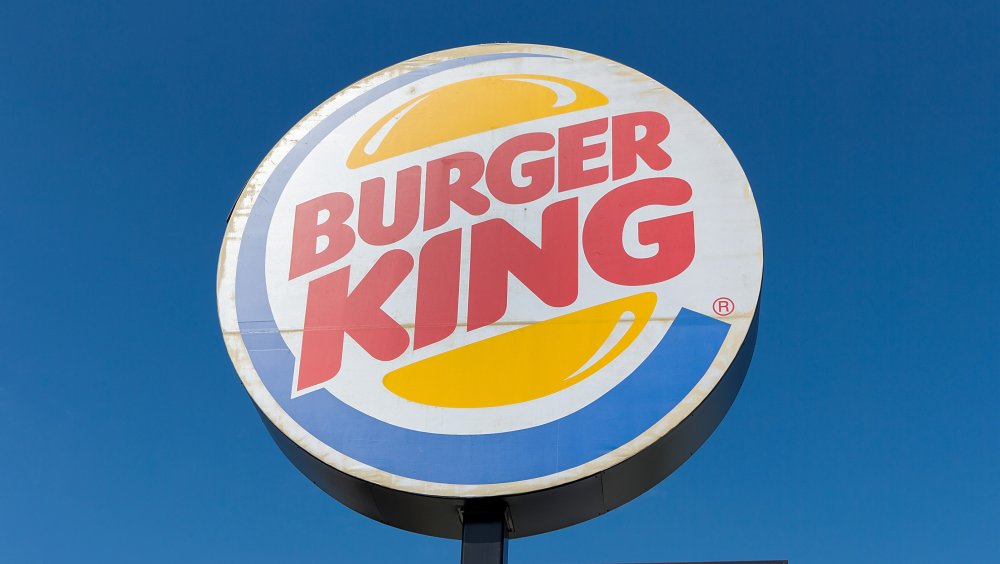The Wild Story Behind The Burger King Mascot
You might remember that brief moment in 2011 when Burger King dethroned its mascot by turning the chain's focus to the food itself (via Forbes). But that didn't last long, and now the creepy, big-headed king is back on Burger King's ads. While you all know the chain's mascot and the odd juxtaposition of the large plastic head on a normal human body, the story behind the mascot is even more bizarre than you might imagine.
To fully understand the wild story behind the BK mascot, you need to take a step back to 1970s fast-food culture. According to CBR, it was not uncommon for the fast-food restaurant to hire magicians dressed to entertain or entice kids to eat at the chain. At select stores, someone dressed as a king would come out, do tricks, and hand out balloons. So, to keep consistent with the theme, there were some large, plastic king heads made to fit over the helium tanks. To top it off, it was designed so the entertainers could blow up the balloons through a hole in the king's mouth too.
This is how the head made a comeback
Between the 1960s and early 1970s, the chain had simply used an animated king in its television advertisements. The small king with normal proportions would either give kids small gifts or buy them food at a Burger King store in all of the commercials, according to Burger King Fandom. The ad would then end with the king saying the chain's slogan, "Burger King, where kids are king." So, the king-costumed kids' entertainers were a logical, if creepy, part of the advertising plan.
Fast-forward 30 years to the early 2000s. The Burger King was looking to breathe new life into its advertising, so the chain hired a firm, Crispin Porter + Bogusky, to find a new image. While doing research, one executive found one of the old helium tank covers on eBay and decided to make it a part of the new initiative, according to CBR. With that, the new big-headed king was launched in 2004. While the strange story behind the mascot doesn't exactly make it better, at least you'll understand where it comes from now.

